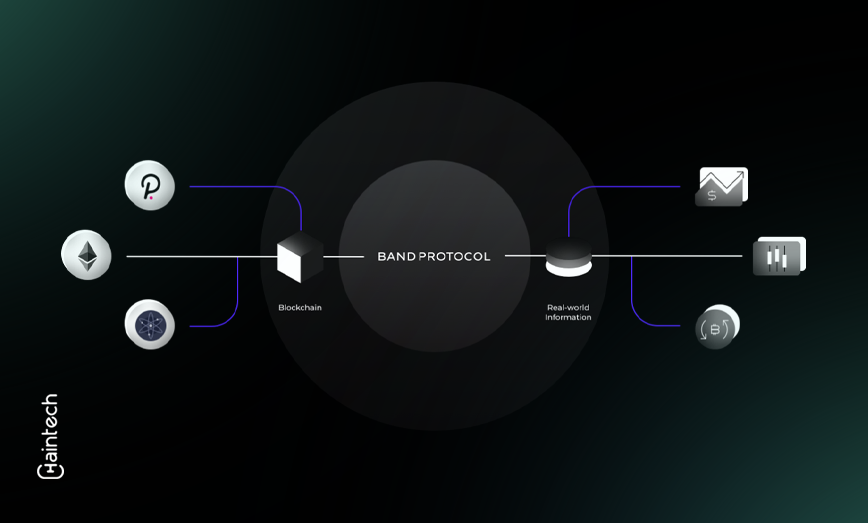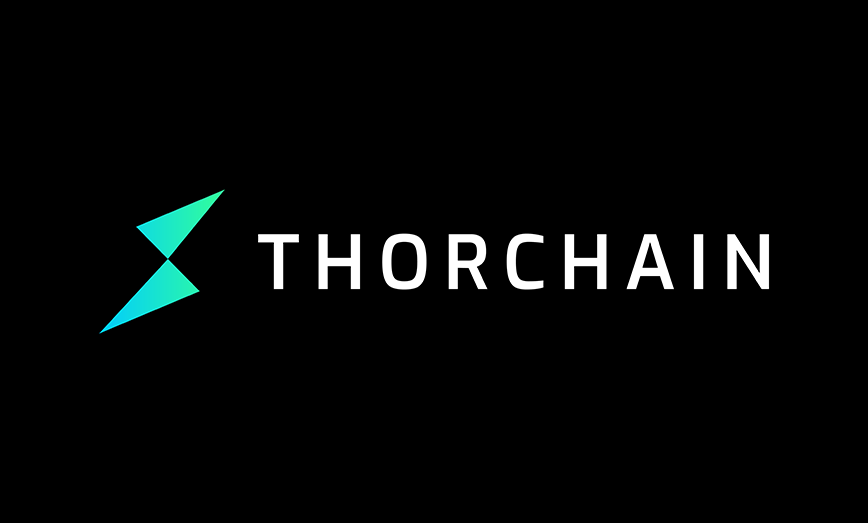Band Protocol – Everything You Need to Know it

As decentralised applications (DApps) continue to reshape financial systems globally, one persistent challenge remains: accessing trustworthy real-world data that resides off-chain.
In a blockchain, where data sources like financial market prices exist off-chain, integrating this information on-chain is essential for DApps to function effectively.
Imagine needing to automate trades based on external events, such as changes in gold prices, using a smart contract. Since blockchain itself cannot fetch data from external websites, a solution like the Band Protocol acts as a bridge. It enables smart contracts to securely and efficiently interact with off-chain data sources, ensuring accuracy and reliability.
This capability is vital for the broader adoption and functionality of decentralised finance (DeFi) applications, allowing developers to create more robust and versatile solutions. Let’s understand more about it.
What is Band Protocol?
Band Protocol is a decentralised oracle project that integrates global data into the blockchain environment. It employs a public blockchain called the BandChain, which enables any business to request data using APIs or other traditional web services. Oracles work as bridges, allowing blockchain-based smart contracts to access trustworthy, authenticated digital data from beyond the blockchain.
Band Protocol’s blockchain, BandChain, is a Cosmos-compliant public blockchain. BandChain stakeholders verify data from digital sources so that smart contracts on Ethereum and other blockchains can use it. When it comes to gold prices, your dApp can rely on Band Protocol to provide reliable information.
BAND serves as the utility and governance token for the Band Protocol project. Validators receive validation rights from other BAND holders or own a particular quantity of BAND tokens.
History of Band Protocol
Paul Chonpimai, Sorawit Suriyakarn, and Soravis Srinawakoon founded Band Protocol in 2017. Since then, it has made a substantial contribution to the blockchain industry. Band Protocol, which launched its ERC-20 token in September 2019, moved to the Cosmos Network in 2020 with Band Protocol 2.0.
The founders contribute a wide range of specialised knowledge. Former Ericsson and BCG software engineer and management consultant Soravis Srinawakoon is now CEO. Sorawit Suriyakarn, CTO, worked at Quora and Dropbox, while Paul Chonpimai, CPO, was a web developer and engineer at Tripadvisor.
Band Protocol raised $7.9 million from Binance Labs, Sequoia Capital India, ZBS Capital, and others. This sponsorship shows Band Protocol’s dedication to improving decentralised applications (DApps) by providing dependable off-chain data, a crucial blockchain utility.
How does it work?
Band Protocol operates through its dedicated BandChain blockchain, leveraging the Cosmos SDK for its infrastructure. This framework allows developers to create customised Oracle scripts on BandChain, facilitating decentralised applications (DApps) and smart contracts to access accurate off-chain data.
These Oracle scripts are highly adaptable, specifying details such as data type, source, validator requirements, and data aggregation methods.
Here’s how it works: Initially, a DApp submits a data request based on its specific Oracle script. A randomly chosen group of validators then receives this request and obtains the necessary data from the specified source.
Subsequently, the collected data from validators undergoes aggregation as per the predefined parameters of the Oracle script. Once aggregated, this data is permanently stored on BandChain, accompanied by an Oracle data proof for authentication.
Finally, the validated data is transmitted back to the requesting DApps or blockchains, ensuring seamless integration of real-world data with blockchain applications, thereby enhancing reliability and functionality across the ecosystem.
Features of Band Protocol
Data Integration:
Band Protocol enables blockchain-based applications to access a wide range of real-world data sets, such as price feeds, weather information, random numbers, sporting event results, and more.
Blockchain Migration:
Originally launched as an ERC-20 token on Ethereum, Band Protocol migrated to the Cosmos network in June 2020, leveraging the Cosmos SDK for improved performance and scalability.
Native Token (BAND):
BAND serves as the native token of the Band Protocol. It is used as collateral to verify and fulfil data requests, facilitates transactions on BandChain, and incentivizes validators and data providers.
Efficiency and Compatibility:
Band Protocol is designed to be more efficient than traditional oracle networks, ensuring rapid and reliable data transmission across multiple blockchain and smart contract platforms.
Decentralised Governance:
Band Protocol operates on a decentralised governance model where community members have a say in data curation and other protocol decisions through staking and voting mechanisms.
Cross-Chain Compatibility:
It facilitates seamless data interoperability across different blockchain networks, supporting a wide range of decentralised applications and use cases.
Data Aggregation:
DApps can access curated and validated data through Band Protocol’s data aggregator feeds, ensuring they have access to accurate and trustworthy information for their operations.
Community Participation:
The Band Protocol community plays a crucial role in maintaining and evolving the protocol, ensuring transparency, fairness, and reliability in data sourcing and validation processes.
Conclusion: Is BAND a good investment?
This article has offered some basic information on what band protocol is. However, investors should consider a few critical factors before investing:
BandChain uses Tendermint BFT consensus and limits validators to 100 nodes. Band Protocol’s decentralisation will be limited.
BAND uses its own blockchain, unlike Chainlink and other Oracle providers. More chances will arise for the project to scale its ecosystem. Data delivery on its own blockchain hasn’t added value. Wait and see.
BAND was built on Ethereum and now Cosmos, however, it is not infrastructure-dependent. More contract platforms can be supported if the project becomes more popular.
Nevertheless, if you wish to invest, thorough research is required.









